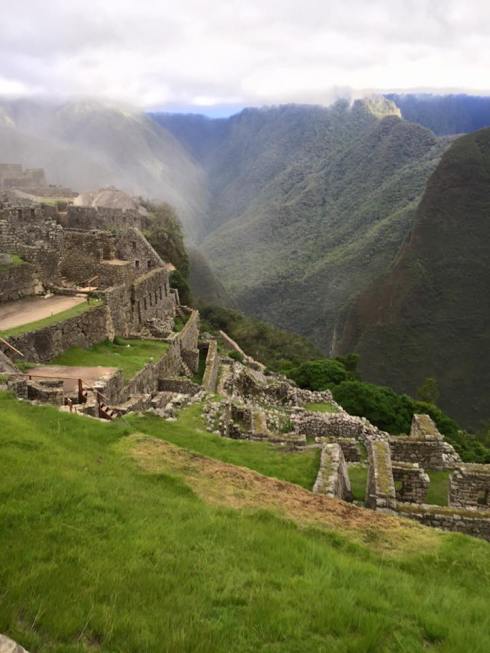The tourism industry portrays itself as something which bridges barriers between cultures. While this can be true to some extent, the demographics of the modern tourism and travel writing industries have their roots in past western colonialism and the privilege westerners enjoy. White people, especially white men, who are well-off and love to travel have a lot of societal advantages that they may not be aware of. As a white man, I think it is important that we respect other cultures when we travel, and that includes encouraging more diverse groups of peoples’ perspectives in the travel industry. This blog post is about how privileged travelers can do more to support more inclusive practices in travel writing, and to be aware of their privilege when making decisions about how to act in foreign places.
Travel is a great thing that can break down boundaries between cultures. I have personally learned a huge amount from traveling. But over the course of my time at college, I’ve begun to think more about the privilege I have as a white male from an affluent background.
My first time I gave this thought was when I turned in my first draft of an essay paragraph for my Fall Semester college writing class. My paper had been an introduction, and a description of being the only person of Western European descent on a train in Ukraine, and how exhilaratingly adventurous I felt. My professor, when she was grading my first draft, wrote a note that encouraged me to consider how my viewpoint was a privileged viewpoint, and that my travel writing should acknowledge this at the very lest.
My first reaction was a sigh of exasperation, after all, I felt that my professor had been upset at the fact that I was an avid traveler, and I was honestly kind of offended. I loved a lot of things about being in Ukraine – the architecture, the food, the language, and all that. How could I be somehow offending someone by saying that?
And yet, the more I thought about it, the more I realized – she had a point. Plenty of people in western countries have to put up with being the only person of their race in a room of people every day. I’ve learned that, for many people of color in western countries, due to historical legacies of racism and intolerance, being the only person of your ethnicity in a room is not an exciting, adventurous thing – it can cause anxiety that some have to deal with every day. White Americans are in a position of privilege where being the only person of their racial background in a room is an “interesting” experience, not a difficult one, and not one that regularly have to put up with in America. The way I wrote could have been more considerate of that.
I find some of the so-called “social justice warriors” at my university to be very extreme. Some are so politically correct that they just don’t think it’s ever ok for white people to write about issues that affect other groups of people at all. Many are less extreme.
But overall, I feel that when it comes to how modern travel writing portrays other cultures and places, there’s a lot that needs to change. A lot of lonely planet books, while they are great for tourists, have a tendency of feature culturally-demeaning cliches (even if well-intended). And despite the rising numbers of tourists from outside the western world, many travel books still feature western perspectives on the country over locals’ modern perspectives. At its best it can be cliche, other times it can be downright orientalist and exoticizing. At the end of the day, travel writing is a business, and many travel guides are in it for the money. But as western travelers, we should be aware that many books cater to our perspective. And we should make more of an effort to bring other travelers’ voices into the mix. Because travel is not just for white people. It shouldn’t be, and we should do more to encourage inclusiveness in backpacker communities.
1) Promote more blogs of people of color and LGBTQA+ travelers in travel media.
The way privileged white westerners experience non-western countries is not the same as how many people of color experience them. Growing up in a privileged background at home can warp your perspective on other places. It doesn’t mean your perspective is less valid, but there are things that marginalized groups of people experience which can teach them about the world through a different lens.
I’m not going to say what those things are, because, as a white person, I don’t know the intricacies of them. It is not my place to guess how people of other backgrounds experience travel. But I know one thing, let’s get real: when you come from a position of societal privilege, there’s bound to be differences in your worldview which affect perspectives and experiences while traveling.
Non-white travelers exist, and their opinions on places should be valued just as much. Despite rising numbers of non-western and non-white travelers, travel media remains largely white-dominated, which is ironic considering that travel can be a great way to bring people together. While white people can never completely relate, we can listen. Representation in travel writing matters. This blogger, on her blog, (Oneika The Traveler) (she is African-American), writes about why it is important that travel media becomes more inclusive of non-white people: http://www.oneikathetraveller.com/lack-black-travel-blogging-travel-media.html
2) Stop using orientalist words like “authentic” and “exotic” to describe non-western cultures.
If you look at a typical travel guide’s introduction description of a western country, you can find a lot of cultural cliches for sure. The laid-back atmosphere of France, the open, diverse geology of the US, all that. The most prominent photos will often be photos of famous sites, or gorgeous landscapes.
When you look at non-western countries travel books, there is a very different tone. Typically, the photos featured are more likely to be of people in traditional clothing, as opposed to in books for western countries where the photos featured are of sights and landscapes in the country. Carelessly, there is liberal, orientalist use of the words “authentic” and “exotic”.
This is a big problem. Travel should be an activity which teaches people about cultural differences and cultural similarities in a balanced manner. It shouldn’t fetishize and hype-up the differences that exist between western and non-western countries, especially when those differences can be a result of decades of colonialism, oppression, and poverty.
3) Write about differences between regions a more well-rounded way
A lot of travel writing that compares different world regions does it in a compartmentalizing, demeaning manner. Europe? Go there for the culture! Africa? Go there for the national parks! When we reduce different regions of the world solely to their roles in fulfilling travelers’ wishes, not only do we look overlooked travel opportunities, but we also reinforce stereotypes that are rooted in colonialism and orientalist.
We need to acknowledge that there is more that a traveler can enjoy in Africa than Safaris, as there is more a traveler to Europe can enjoy than sightseeing. We need to see regions for what they are, beyond just what the tourism industry in those places promotes.
4) Respect the culture when you go abroad!!!!
This should be obvious, but it isn’t to many people. It’s extremely upsetting for me when I see people disrespecting the culture of a non-western country. When I was in Japan, I came across a white american man in the guesthouse I was staying it who would bark basic questions in English (the receptionist didn’t understand well) and wouldn’t even bother to learn “please”, or “What is it?” in Japanese. Learning the language of a country where it is important shouldn’t be a cool bonus thing travelers do. It should be expected.
Also, when I was in Peru, there was one woman on one of my tours who talked about the people in very belittling ways, and kept trying to take photos of indigenous Quechua-speaking children when the families told her they didn’t want to be photographed. She also made lots of tasteless remarks about Inca people believing in evil spirits. It was extremely tasteless to me and to other travelers. It is just not okay.
Another important point: If, when we are abroad, we only notice things that confirm our pre-existing ideas of cultures, we are not being open minded at all. But some travelers do that. And that’s not ok.
______________
The bottom line is that, I think there are things about travel writing which are overdue to change. The world is not static, and travel writing shouldn’t be either.
Below I have some good blog posts with interesting perspectives on travel and privilege:
http://inedibleroots.tumblr.com (blog which takes a critical look at the western-oriented nature of the tourism industry, the commodification of culture, and features writing with perspectives of non-white travelers)
https://feminismandhappiness.tumblr.com/post/56842139860/im-tired-of-seeing-white-people-treating-poor (a post about why traveling is not a cure for racism)


